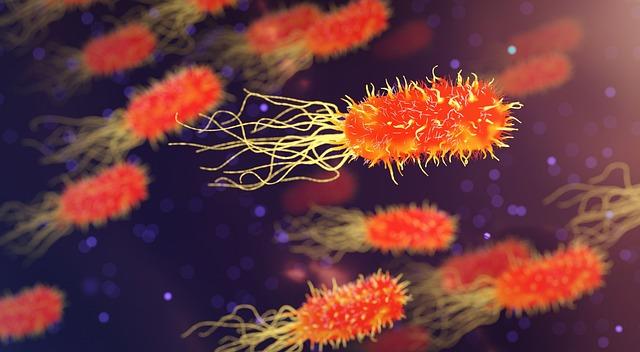Why Does Artificial Sweetener Taste Bad? The Science Explained
If you’ve ever taken a sip of a diet soda only to be met with a bitter and unpleasant aftertaste, you’re not alone. Artificial sweeteners, while marketed as a healthier alternative to sugar, often leave a bad taste in our mouths – both literally and figuratively. But have you ever wondered why these sugar substitutes can taste so bad? In this article, we’ll delve into the science behind why artificial sweeteners leave many people wrinkling their noses in distaste. So grab a seat and prepare to learn why your favorite low-calorie treats might not be as sweet as you think.
Contents
- Why Artificial Sweetener Tastes Bad to Some People
- The Role of Taste Receptors in Artificial Sweetener Perception
- Chemical Makeup: Understanding the Science Behind Artificial Sweeteners
- The Influence of Genetics on Perception of Artificial Sweeteners
- Factors that Affect the Taste of Artificial Sweeteners
- Tips for Improving the Taste of Artificial Sweeteners
- Exploring Alternatives: Natural Sweeteners vs Artificial Sweeteners
- Creating a Balanced Approach to Sweetness: Finding What Works for You
- Closing Remarks
Why Artificial Sweetener Tastes Bad to Some People
Artificial sweeteners are a common substitute for sugar in many foods and drinks, but not everyone enjoys their taste. So, why do some people find artificial sweeteners to taste bad? The answer lies in the science behind how our taste buds perceive these sugar substitutes.
One reason artificial sweeteners may taste unpleasant to some individuals is due to their chemical structures. These molecules can interact differently with taste receptors on our tongues, leading to a bitter or metallic aftertaste for some people.
Additionally, our taste preferences are influenced by genetics, meaning that some individuals may be more sensitive to the taste of artificial sweeteners than others. This genetic variation can impact how we perceive sweetness and bitterness, contributing to why some people find artificial sweeteners unpalatable.
The Role of Taste Receptors in Artificial Sweetener Perception
Artificial sweeteners are a common substitute for sugar in many products, but have you ever wondered why they can taste so strange or even bad? It all comes down to the role of taste receptors in our perception of these sweeteners. Our taste buds are equipped with specific receptors that interact with molecules in our food, sending signals to our brain about the taste we are experiencing.
When it comes to artificial sweeteners, these molecules do not always match up perfectly with our taste receptors, leading to a different perception of sweetness. In some cases, artificial sweeteners can activate bitter receptors in addition to sweet receptors, giving them a strange or off-putting taste. This mismatch between the molecular structure of artificial sweeteners and our taste receptors is the reason why they can taste bad to some people.
Chemical Makeup: Understanding the Science Behind Artificial Sweeteners
Artificial sweeteners, such as aspartame, saccharin, and sucralose, are commonly used as sugar substitutes in various food and beverages. But have you ever wondered why they sometimes taste unpleasant or leave a strange aftertaste? The answer lies in the chemical makeup of these artificial sweeteners.
One of the main reasons why artificial sweeteners can taste bad to some people is because they are significantly sweeter than natural sugars like sucrose. This intense sweetness can cause a bitter or metallic aftertaste, which some individuals are more sensitive to than others. Additionally, artificial sweeteners often contain certain chemicals that can react with taste receptors on the tongue, leading to off-putting flavors.
Understanding the science behind artificial sweeteners can help shed light on why they may not always taste as pleasant as natural sugars. By delving into the chemical composition of these sugar substitutes, we can gain a better appreciation for the complexities of taste perception and how our bodies react to different types of sweeteners.

The Influence of Genetics on Perception of Artificial Sweeteners
Our taste buds play a crucial role in determining our perception of artificial sweeteners. Genetics can have a significant influence on how we perceive these sugar substitutes. Some people may find artificial sweeteners to taste unpleasant or even bitter, while others may not notice any difference from natural sugar.
One of the key factors contributing to this variation is the presence of specific taste receptors on the tongue. Genetic variations in these receptors can impact how we perceive sweetness, making artificial sweeteners taste different to different individuals. Additionally, our genetic makeup can affect how our brains interpret these taste signals, further influencing our overall perception of artificial sweeteners.
Understanding the role of genetics in our perception of artificial sweeteners can help explain why some people prefer natural sugar over artificial alternatives. By recognizing these differences, we can appreciate the complexity of taste perception and make more informed choices about our dietary preferences.

Factors that Affect the Taste of Artificial Sweeteners
include:
- Chemical Structure: The chemical makeup of artificial sweeteners plays a significant role in how they taste. Some sweeteners, such as aspartame, have a complex structure that can lead to a bitter aftertaste for some individuals.
- Concentration: The concentration of artificial sweeteners in a product can greatly impact its taste. When used in high concentrations, some sweeteners can become overpowering and leave a lingering artificial taste in the mouth.
- Interactions with Other Ingredients: Artificial sweeteners can interact with other ingredients in a product, altering their taste. This can result in unexpected flavor profiles that may not be as pleasant as intended.
Understanding these factors can help shed light on why some artificial sweeteners may not taste as good as natural sugar to certain individuals. By considering these variables, manufacturers can work to create products that appeal to a wider range of tastes.
Tips for Improving the Taste of Artificial Sweeteners
Artificial sweeteners are often perceived as having a strange aftertaste, leaving many people wondering why they don’t taste quite like sugar. The science behind this phenomenon lies in the molecular structure of artificial sweeteners. While sugar molecules have a symmetrical structure, artificial sweeteners like aspartame and sucralose have asymmetrical structures, leading to a different taste experience.
To improve the taste of artificial sweeteners, there are a few tips you can follow:
- Experiment with different brands and types of artificial sweeteners to find one that suits your taste preferences.
- Adjust the amount of artificial sweetener used in your recipes to find the right balance of sweetness.
- Consider combining artificial sweeteners with natural sweeteners like honey or maple syrup to enhance the flavor profile.

Exploring Alternatives: Natural Sweeteners vs Artificial Sweeteners
One of the most common complaints about artificial sweeteners is their strange aftertaste. Many people describe artificial sweeteners as having a bitter or metallic flavor that lingers in the mouth. But why exactly do artificial sweeteners taste bad?
The science behind the unappealing taste of artificial sweeteners lies in their chemical structure. Unlike natural sweeteners, which are derived from plants or fruits, artificial sweeteners are chemically manufactured compounds that mimic the taste of sugar. This results in a taste that is often perceived as unnatural and unpleasant by the human palate.
Furthermore, artificial sweeteners can activate taste receptors on the tongue that are not typically stimulated by natural sugars. This can lead to a confused sensory experience, where the brain struggles to process the conflicting signals it receives from the taste buds. In contrast, natural sweeteners like honey or maple syrup have a more complex flavor profile that is closer to the taste of sugar, resulting in a more satisfying and familiar taste experience.

Creating a Balanced Approach to Sweetness: Finding What Works for You
Have you ever wondered why artificial sweeteners often have a strange aftertaste? The answer lies in the complex science behind how our taste buds perceive sweetness. While natural sugars like sucrose activate specific taste receptors on our tongues, artificial sweeteners can trigger different receptors that may not always harmonize with our taste preferences.
One common culprit is the artificial sweetener aspartame, which can leave a metallic or bitter taste in some people’s mouths. This is because the chemical structure of aspartame interacts with taste receptors in a way that can be off-putting to certain individuals. On the other hand, more recently developed sweeteners like stevia may offer a more balanced sweetness profile that appeals to a wider range of taste buds.
Ultimately, finding the right balance of sweetness for you comes down to personal preference and experimentation. Whether you opt for natural sugars, artificial sweeteners, or a combination of both, it’s important to listen to your body and choose what makes you feel good. By having an open mind and being willing to try new things, you can discover a balanced approach to sweetness that works best for you.
Closing Remarks
In conclusion, the science behind why artificial sweeteners taste bad is a fascinating combination of biology and psychology. Not only do our taste buds play a role in our perception of these sweeteners, but our brain’s expectations and previous experiences also come into play. By understanding the factors at play, we can better appreciate the complexities of taste and perhaps even find ways to enjoy artificial sweeteners more. So next time you reach for that diet soda or sugar-free snack, remember that your taste buds and brain are working together to create the flavor experience you’re having. Happy tasting!







